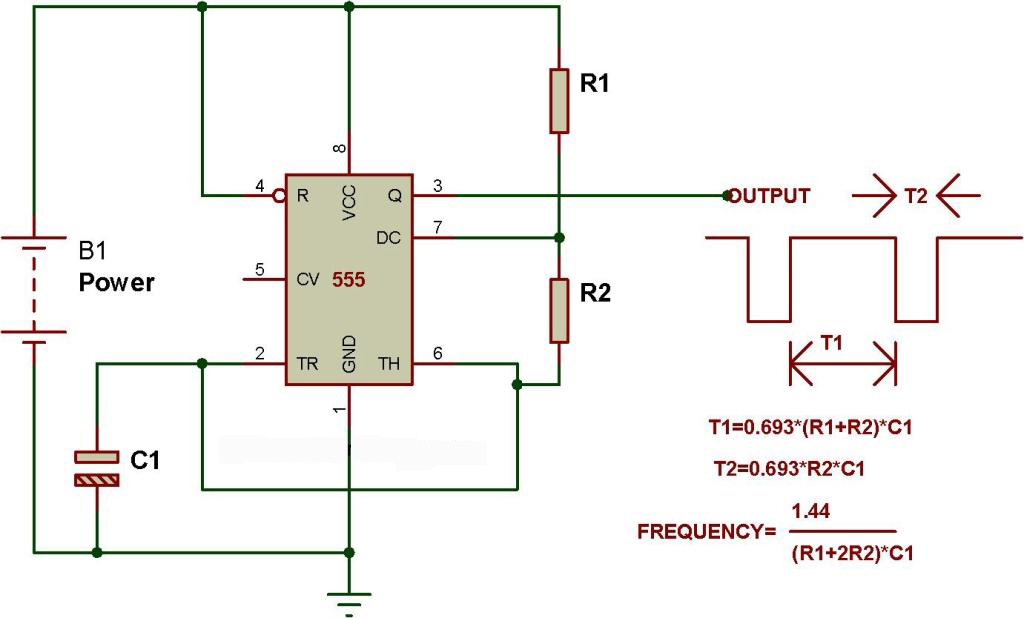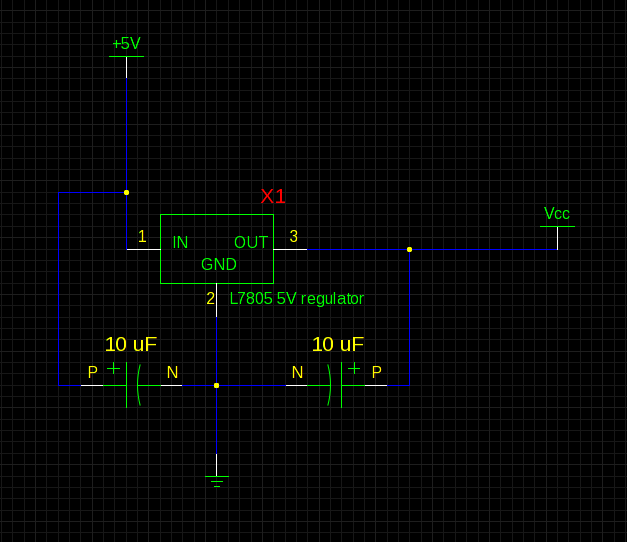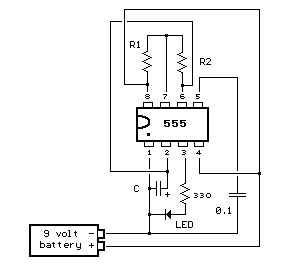
astable mode of 555 timer

The schematic presented originates from buildcircuit.com. This circuit functions as a music generator, infrared transmitter, and LED blinker, depending on the values of R1, R2, and C1. A minor modification to the previous circuit allows it to operate as an infrared transmitter, which can be utilized for testing IR sensors and constructing an infrared-based object counter. The circuit can be further modified by removing the LDR and incorporating a series of switches and resistors to create a simple organ.
The circuit in question is versatile, allowing for multiple configurations based on component values and connections. The primary components include resistors (R1, R2), a capacitor (C1), and an optional light-dependent resistor (LDR). The values of R1 and R2 determine the frequency of the oscillation, which is crucial for generating sound in the music generator mode. Adjusting these resistances can lead to different musical notes being produced.
When configured as an infrared transmitter, the circuit emits modulated infrared signals, which can be used to test IR sensors effectively. This application is particularly useful in various projects, such as remote controls or proximity detection systems. The infrared output can be tuned by changing the capacitor value, thus affecting the modulation frequency.
For the infrared-based object counter application, the removal of the LDR allows for a more straightforward design. By adding a series of switches and resistors, the circuit can be transformed into a simple organ, where each switch corresponds to a different note or sound. This modification enhances the educational value of the project, providing insights into sound synthesis and electronic circuit design.
Overall, the schematic serves as a foundation for experimentation and learning in electronics, showcasing the flexibility of basic components in creating diverse functionalities.The following schematic has been taken from buildcircuit. com. The following circuit can work as a music generator, Infrared transmitter and LED blinker depending upon the values of R1, R2 and C1. Making a minor modification in the previous circuit makes it work as an infrared transmitter. We can use this infrared transmitter for testing IR sensor circuit and making an infrared based object counter. You can modify the circuit in the following way. Simply remove the LDR and add series of switches and resistors to make a simple organ. Click here to read more about this project. 🔗 External reference
The circuit in question is versatile, allowing for multiple configurations based on component values and connections. The primary components include resistors (R1, R2), a capacitor (C1), and an optional light-dependent resistor (LDR). The values of R1 and R2 determine the frequency of the oscillation, which is crucial for generating sound in the music generator mode. Adjusting these resistances can lead to different musical notes being produced.
When configured as an infrared transmitter, the circuit emits modulated infrared signals, which can be used to test IR sensors effectively. This application is particularly useful in various projects, such as remote controls or proximity detection systems. The infrared output can be tuned by changing the capacitor value, thus affecting the modulation frequency.
For the infrared-based object counter application, the removal of the LDR allows for a more straightforward design. By adding a series of switches and resistors, the circuit can be transformed into a simple organ, where each switch corresponds to a different note or sound. This modification enhances the educational value of the project, providing insights into sound synthesis and electronic circuit design.
Overall, the schematic serves as a foundation for experimentation and learning in electronics, showcasing the flexibility of basic components in creating diverse functionalities.The following schematic has been taken from buildcircuit. com. The following circuit can work as a music generator, Infrared transmitter and LED blinker depending upon the values of R1, R2 and C1. Making a minor modification in the previous circuit makes it work as an infrared transmitter. We can use this infrared transmitter for testing IR sensor circuit and making an infrared based object counter. You can modify the circuit in the following way. Simply remove the LDR and add series of switches and resistors to make a simple organ. Click here to read more about this project. 🔗 External reference





